Author: Brian Hall
It’s been surmised that fermenting in a semi-permeable vessel with a relatively large amount of headspace increases the likelihood of the beer coming into contact with the surrounding atmosphere, which is presumed to lead to undesirable off-flavors. This concern has led to the common recommendation to ferment with as little headspace as feasibly possible, leaving just enough to contain the kräusen that develops during active fermentation.
Results form a previous xBmt on this subject showed tasters were generally capable of telling apart beers fermented with different amounts of headspace. However, one caveat to the xBmt was that different volumes of beer were fermented in identical vessels, leading me to wonder if it was headspace alone that was responsible for the significant finding.
With evidence supporting the notion that oxygen detrimentally affects beer, it seems plausible that a larger amount of headspace might increase the potential for oxygen ingress into the fermentor that leads to unwanted flavors. If this is true, those who enjoy brewing the occasional smaller experimental batch using their regular sized gear may want to reconsider their approach. However, if the difference noted by tasters in the aforementioned xBmt was due more to differences in beer volume, then keeping that constant while varying the amount of headspace ought to yield different results. I decided to test it out for myself.
| PURPOSE |
To evaluate the differences between beers fermented with varying amounts of headspace when beer volume is consistent.
| METHODS |
Given the apparent sensitivity to oxygen of New England IPA, I thought it a good style to test this variable as well as another one I was curious about, so I brewed up a 20 gallon batch.
Happily Hazy
Recipe Details
| Batch Size | Boil Time | IBU | SRM | Est. OG | Est. FG | ABV |
|---|---|---|---|---|---|---|
| 5.5 gal | 60 min | 103.5 IBUs | 6.4 SRM | 1.070 | 1.013 | 7.5 % |
| Actuals | 1.07 | 1.014 | 7.5 % | |||
Fermentables
| Name | Amount | % |
|---|---|---|
| Pelton Pilsner Style Malt (Mecca Grade) | 7 lbs | 46.29 |
| Lamonta American Style Pale Malt (Mecca Grade) | 6 lbs | 39.68 |
| Crystal 15 Patagonia | 1.125 lbs | 7.44 |
| Sugar, Table (Sucrose) | 0.996 lbs | 6.59 |
Hops
| Name | Amount | Time | Use | Form | Alpha % |
|---|---|---|---|---|---|
| Magnum | 6 g | 60 min | Boil | Pellet | 12 |
| Citra | 34 g | 20 min | Boil | Pellet | 12 |
| Cryo - Citra | 28 g | 20 min | Boil | Pellet | 25 |
| Citra | 85 g | 5 min | Boil | Pellet | 12 |
| Citra | 85 g | 1 min | Boil | Pellet | 12 |
| Citra | 85 g | 6 days | Dry Hop | Pellet | 12 |
Yeast
| Name | Lab | Attenuation | Temperature |
|---|---|---|---|
| Barbarian (A04) | Imperial Yeast | 74% | 62°F - 70°F |
Notes
| Water Profile: Ca 117 | Mg 3 | Na 10 | SO4 84 | Cl 168 |
Download
| Download this recipe's BeerXML file |
I started off this brew day by using my sous vide machine to warm up the RO water, which I’d previously collected and adjusted to my desired profile.
While waiting for the water to come to temperature, I weighed out and milled the grain.
Once the water was slightly warmer than target, I transferred it to my 55 gallon/208 liter mash tun then incorporated the grains to achieve my desired mash temperature.
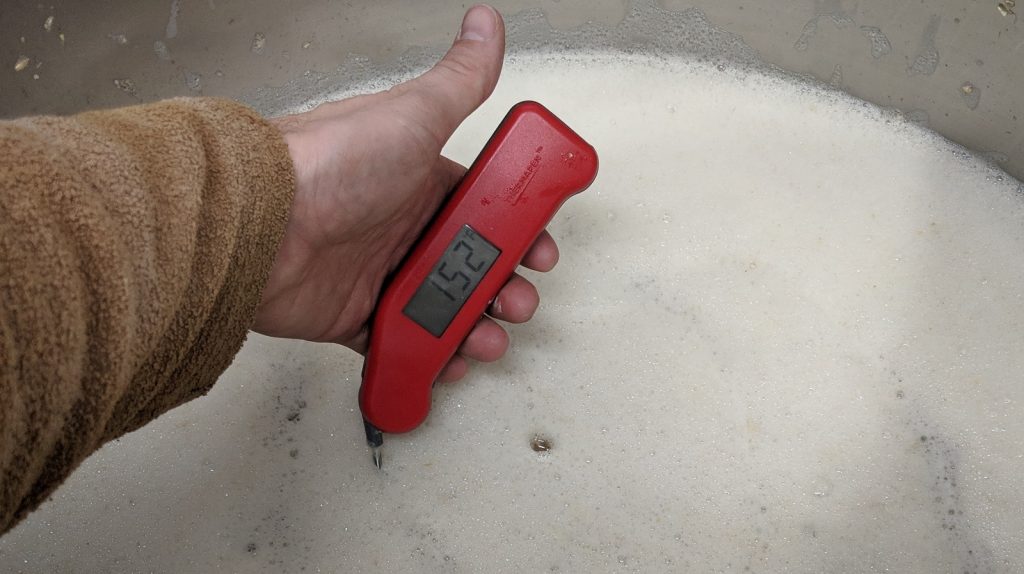
The full volume mash was left alone for a 60 minute saccharification rest.
When the mash was complete, I began collection of the sweet wort.
With the wort homogenized and split between a couple kettles, I brought it to a boil, during which hops were added as laid out in the recipe.
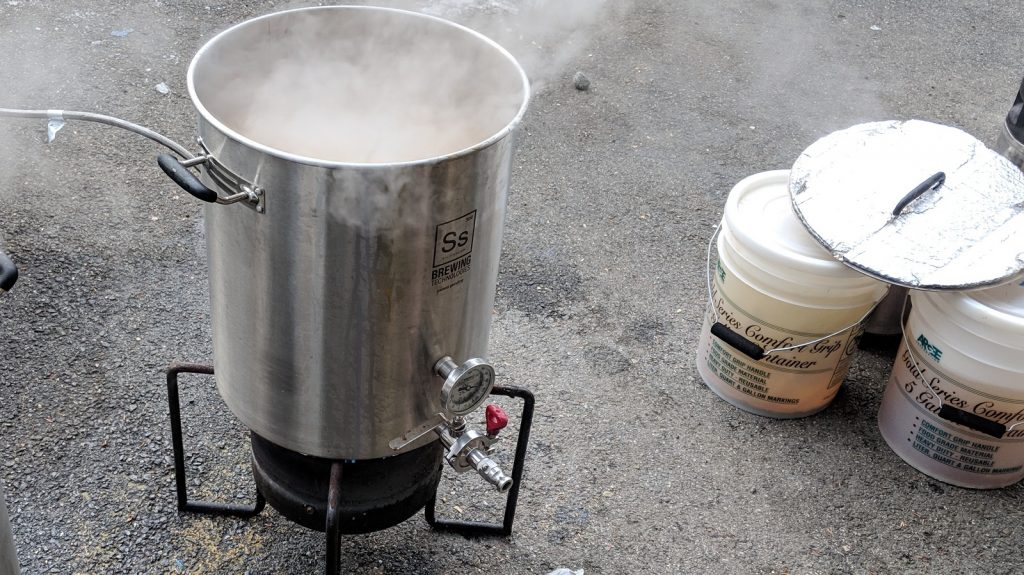
After the 60 minute boil, I quickly chilled the wort with my immersion chiller.
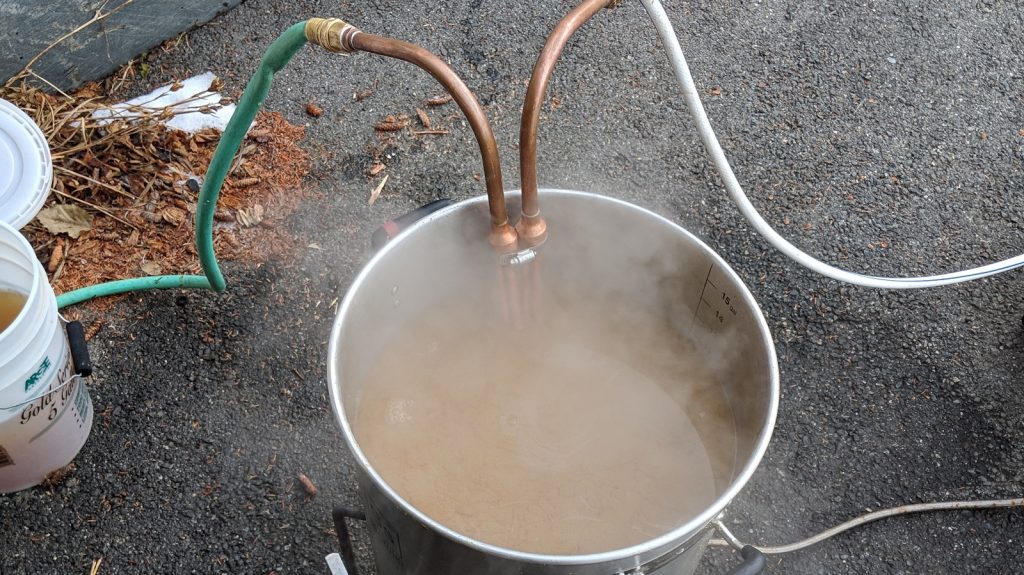
A hydrometer measurement revealed the OG of the wort was right where I expected.
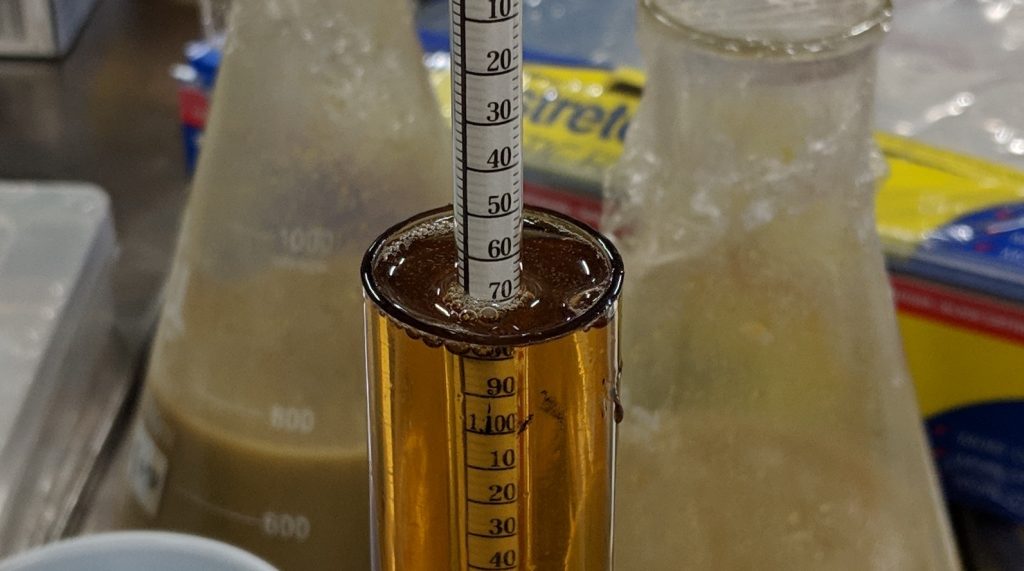
It was time to introduce the variable. In order to test the impact of headspace while keeping volume constant, I racked 4.25 gallons/16 liters of wort to either a 5 gallon/19 liter glass carboy or 6.5 gallon/25 liter glass carboy. Seeing as both carboys had the same diameter, this would lead to a difference in headspace of approximately 1.5 gallons/6 liters. Both batches were hit with the same dose of pure oxygen.
Using some leftover wort, I made a couple starters with Imperial Yeast A04 Barbarian that got pitched the next morning.
Both batches were equally as active just hours after pitching and dry hop additions were added during fermentation a couple days later. With signs of fermentation absent after 2 weeks, I took hydrometer measurements confirming both beers had reached the same 1.014 FG then racked each into CO2 purged kegs.
The beers were given a week to condition and carbonate in my keezer before they were ready to serve.
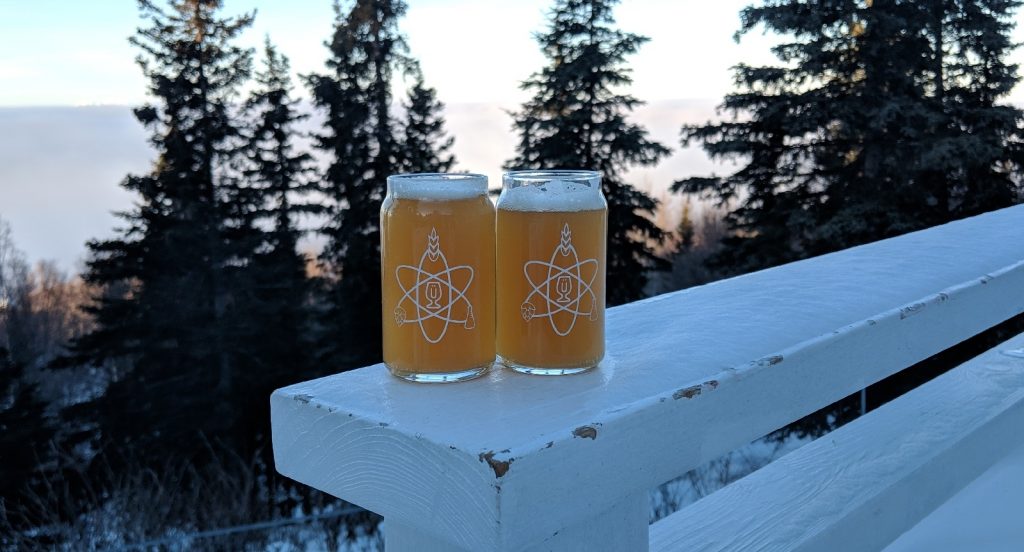
| RESULTS |
A total of 21 people of varying levels of experience participated in this xBmt. Each participant was served 2 samples of the beer fermented with a normal amount of headspace and 1 sample of the beer fermented with a larger amount of headspace in different colored opaque cups then asked to identify the unique sample. A total of 12 tasters (p<0.05) would have had to accurately identify the unique sample in order to reach statistical significance, though only 5 did (p=0.89), indicating participants in this xBmt were unable to reliably distinguish a NEIPA fermented under a typical amount of headspace from one fermented under a larger amount of headspace when beer volume was identical.
My Impressions: Similar to most the tasters, I was unable to tell a difference between these beers with any consistency. Even in side-by-side tastings where I knew the beers in each cup were different, they tasted identical to me. And the beer was delicious! Inspired by Lawson’s Sip of Sunshine, this is one of the original recipes that got me hooked on on both NEIPA and single hop Citra beers years ago. While possessing some haze, it was not a turbid, soupy, milky mess, and both kegs were empty soon after data collection was done. This is a definite “make again” beer for me.
| DISCUSSION |
Of the various things brewers consider when it comes to making a tasty batch of beer, one that some have accepted as a non-issue is the amount of headspace present during fermentation. One of benefit of leaving a some space above the beer is that it reduces the risk of a messy blowoff, though some would contend this comes at the expense of increasing the chances of oxidation. With a prior xBmt supporting the claims of the concerned, the fact tasters in this xBmt were unable tell apart beers fermented under different amounts of headspace was somewhat unexpected.
In considering reasons these results don’t align with those from the original xBmt on headspace, it’s entirely possible the differences perceived by tasters in the first one were caused not by headspace, but rather actual volume of beer being fermented. However, if beer volume wasn’t at play, a reasonable explanation might be that the disparity in headspace amount between the batches in this xBmt wasn’t drastic enough to yield a perceptible difference– 4 gallons/15.1 liters in the first trial compared to 1.5 gallons/5.7 liters in this xBmt. Finally, it’s also possible whatever impact headspace has on beer is subtle enough to be unnoticeable in more characterful styles such as NEIPA.
As a matter of course, I leave just enough headspace to account for the kräusen that develops during fermentation, though resist leaving more than necessary. Seeing as the results from this xBmt contradict previous findings, I’m certainly not prepared to make any final conclusions, though I do feel comfortable continuing to ferment with the amount of headspace I always have. That said, I’m interested to continue exploring this variable in other situations in the hopes better understanding its impact on beer.
If you have any thoughts about this xBmt, please do not hesitate to share in the comments section below!
Support Brülosophy In Style!
All designs are available in various colors and sizes on Amazon!
Follow Brülosophy on:
FACEBOOK | TWITTER | INSTAGRAM
If you enjoy this stuff and feel compelled to support Brulosophy.com, please check out the Support page for details on how you can very easily do so. Thanks!


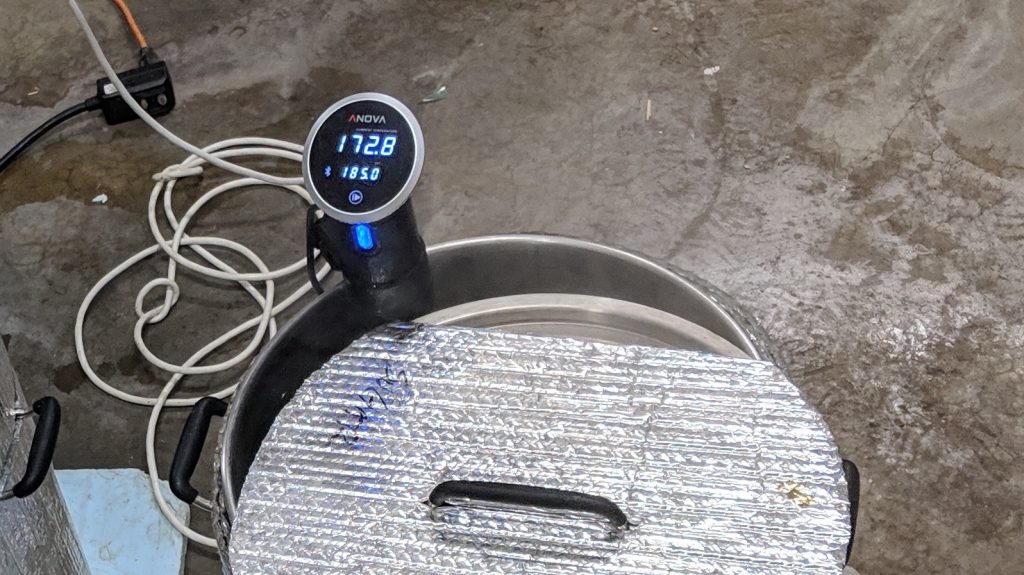



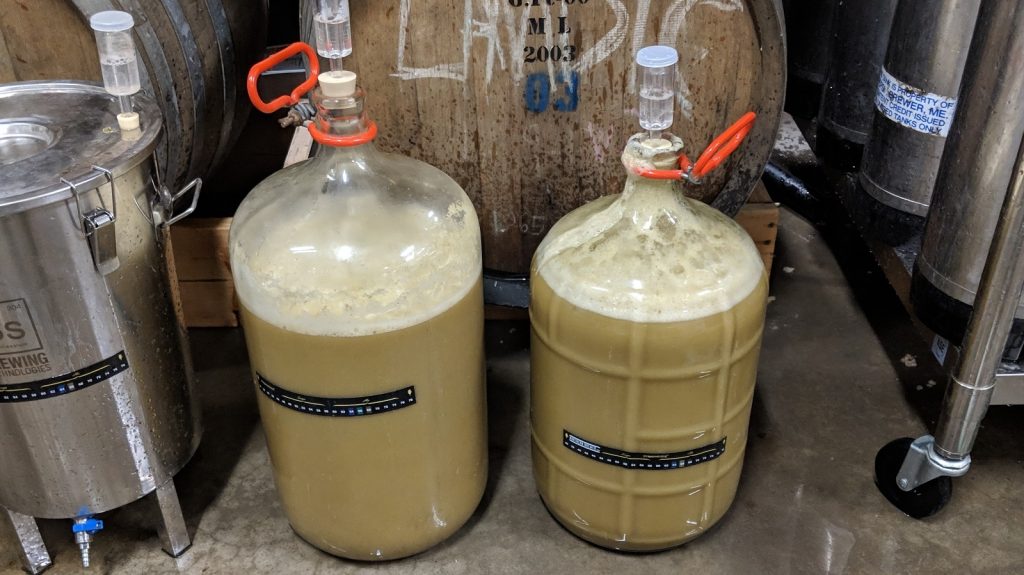
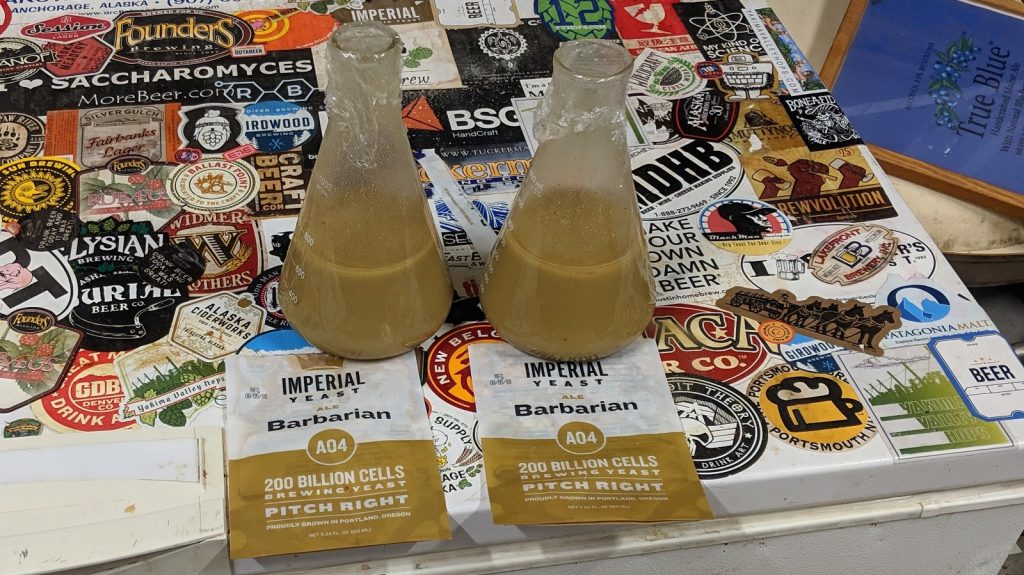
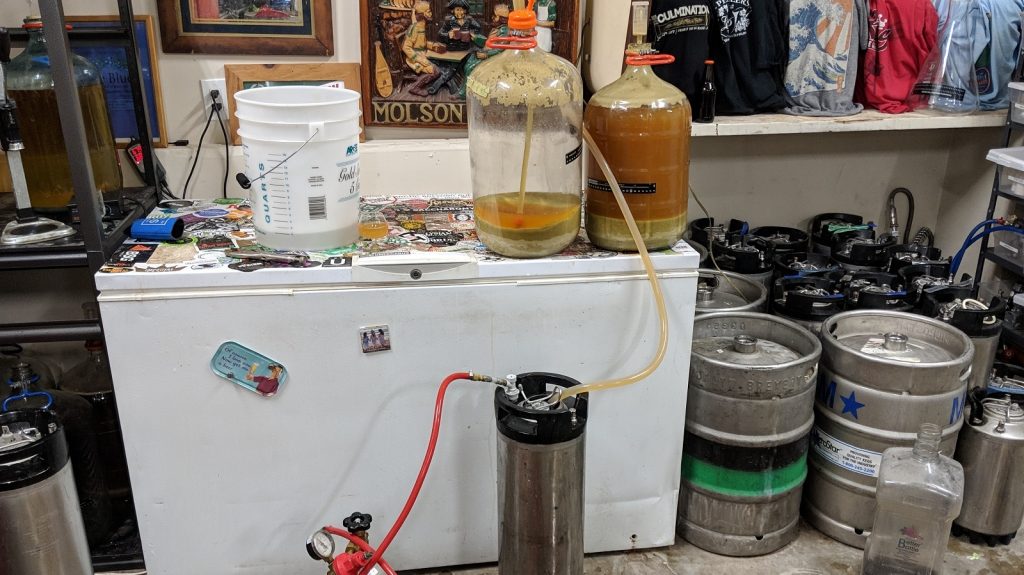










29 thoughts on “exBEERiment | Impact Increased Headspace During Fermentation When Volume Is Consistent Has On A Hazy IPA”
What about brewerys with open fermentation? Does the krausen not protect the beer from the atmosphere?
different style of beer that isn’t worried as much about oxygen ingress I would imagine.
For over 5 years, I’ve brewed 10 gal batches split into two glass carboys- one a 5 gal and another a 6.5 gal. It was just what I had at the time. I would usually try to put more wort into the 6.5 gal carboy, but generally equal amounts of wort were fermented in both carboys. Never really noticed any difference. I always thought the beers tasted identical. Then again, I don’t purge kegs with co2 and my palate isn’t all that super amazing…
Interesting recipe for a NEIPA, or any IPA for that matter with no dry hop or whirlpool/hopstand additions. Certainly wouldn’t give the flavors I would be looking for and reminds me of something more like zombie dust.
The volume of beer bring fermented would affect many factors as in the previous experiment. In this experiment, the surface area of the beer in contact is also identical, which seems a more relevant parameter then headspace volume.
There was a 85 g dry hop 🙂
There is a dry hop addition and 1 min addition is almost identical to hopstand at end of boil.
Must have been added later to the page. If you immediately cool as the post implies, that’s not much of a hopstand.
Personally I never worried about this. I know that any oxygen in that head space will be consumed by the yeast during the growth phase. Always enjoy these exbeeriments, keep them coming !
It might be a greater concern if you perform a cold crash (without a CO2 balloon). In that case the larger head space carboy will see a larger O2 ingress.
Xavier
I think just the opposite, Xavier. If, following fermentation, the headspace is almost entirely CO2, then it stands to reason that during the cold crash, the beer in the vessel with the larger headspace will take up more CO2 before the headspace becomes mixed with a lot of regular air.
I suppose that if you are cold crashing, the more headspace the better. The headspace acts as the ‘BruLoon’, reserving the CO2 of fermentation to be reabsorbed during the crash.
Neither the recipe nor the BeerXML file contain dry hop additions. What and how much were the dry hop additions?
Neither the text nor the BeerXML file mention dry hop additions. What and how much were the dry hop additions?
What I have already thought about was dry hopping with a significant headspace vs smaller headspace, since we dry hop in the same bucket after primary fermentation at lower temps… Probably I’m losing aroma to the headspace and not having a pressurized secondary vessel.
One interesting wrinkle may be to dry hop these two beers without purging headspace after fermentation and then see if there is any perceivable difference in flavor/aroma/appearance. Maybe there has been a test already with/without CO2 purge already. Thanks, great work.
Interesting xbmt! After looking back at the xbmt Jake did a while back, I wonder if headspace has more to do with pressure than O2 exposure if care is taken to limit O2 ingress to the fermentor. Since yeast have such a huge impact on flavor development and care is taken to flush O2 from the headspace after active fermentation has started it wouldn’t surprise me that actual head pressure is what caused the difference in Jake’s xbmt. As stated in the write up, maybe the difference in headspace wasn’t great enough to cause the yeast to create a noticeable difference in flavor.
Maybe a way to test this would be to do an xbmt where head pressure could be measured thought out fermentation or maybe just kept at an equal pressure but with different headspace. Maybe a spunding valve could be used for this? I’ve never used one, so do not know exactly how they work. Maybe even use a yeast strain that is supposedly more sensitive to pressure, like a saison strain. Either way, very interesting result!
Not really an NEIPA recipe though…..
Maybe try a more delicate style like blonde to see if there are effects. That way you can rule out hops masking any effects.
You are not going to have a difference on on such a small batch. But if you ferment in huge fermentors that are high YES you will have a difference. This is due to pressure that you put on the yeast that is at the bottom of the fermentor. For example on a fermentor that is 8m high, you will have several bars of pressure at the bottom of the fermentor, this stresses the yeast and you might not develop the same aroma on yeast forward beers.
As an example at Abbey Rochefort they only fill their fermentors when they ferment.
I would like to see this experiment done with a beer that is not hop forward. I’m sure the hops mask any yeast differences. Perhaps a belgian beer or Hefe?
Belgian and Hefe have strong yeast flavor as well. I would think an all two row with minimal hop ( saaz ) with some US05 might be good to try.
So what day were the dry hops added and did you pull them? Because looking at your recipe and comments it doesn’t line up. You said you added the dry hops a few days after fermentation for 6 days according to the recipe. So did you bag them and then pull them? Or did they remain in the beer for the entire fermentation after you added?
According to the post and recipe there was no dry hops. Oddest NEIPA recipe I’ve seen, and a factor more likely to be affected by headspace was absent.
Maybe testing the amount of surface area to headspace instead of headspace volume would yield different results? i.e. Fermenting in a carboy vs fermenting in an Erlenmeyer flask where the surface area to headspace would be less. If the CO2 creates a blanket over the top of the beer during fermentation then more surface area would “thin” the blanket. This the same reasoning for not storing beer bottles on their side vs upright.
Thanks for another great exbeeriment. The concerns / issues I’ve heard about have pertained to a headspace volume equal to that of wort volume. i.e. 5 gal batch in 10 gal fermenter. So, I think there may be more of a relevant difference when comparing 15% headspace to 100% headspace than 15 and 25%. Just a thought.
This is what jumped out at me…
“a reasonable explanation might be that the disparity in headspace amount between the batches in this xBmt wasn’t drastic enough to yield a perceptible difference”
… I think you acknowledge a very plausible variable that at our scale may just not matter, and if we have to go to drastic means to verify it, then at this scale I’m content to RDW… you know the rest. I’m glad you tested this out though, because this directly influences future equipment purchases that I no longer need worry about.
Interesting xbmt, but curious about the premise that more head space could impact flavor due to increased oxygen exposure. Oxygen is added when yeast is pitched and used during the aerobic growth phase and then would be purged during as active fermentation starts and CO2 is produced. The oxygen is pushed out and the air lock would prevent air from re-entering the beer. Is the thought that there is increased oxygen pick up during dry hopping or transfer? I think that pressure could certainly have an impact, but unlikely at those volumes. I did not read the initial xbmt, but curious what the perceived flavor differences were. Also have tests been done splitting batches into plastic and glass and seeing if there is a difference?
This premise is about an existing rumour, which many of us have read. Not logic. That is why so many come back negative.
“Once the water was slightly warmer than target, I transferred it to my 55 gallon/208 liter mash tun…”
I think you missed a couple of decimal points…
Pro brewer here. Disappointed you didn’t make this something more like 25% vs. 100% (or more) headspace. The point being that you could simulate one turn in a multi-turn fermenter (“a half batch”).